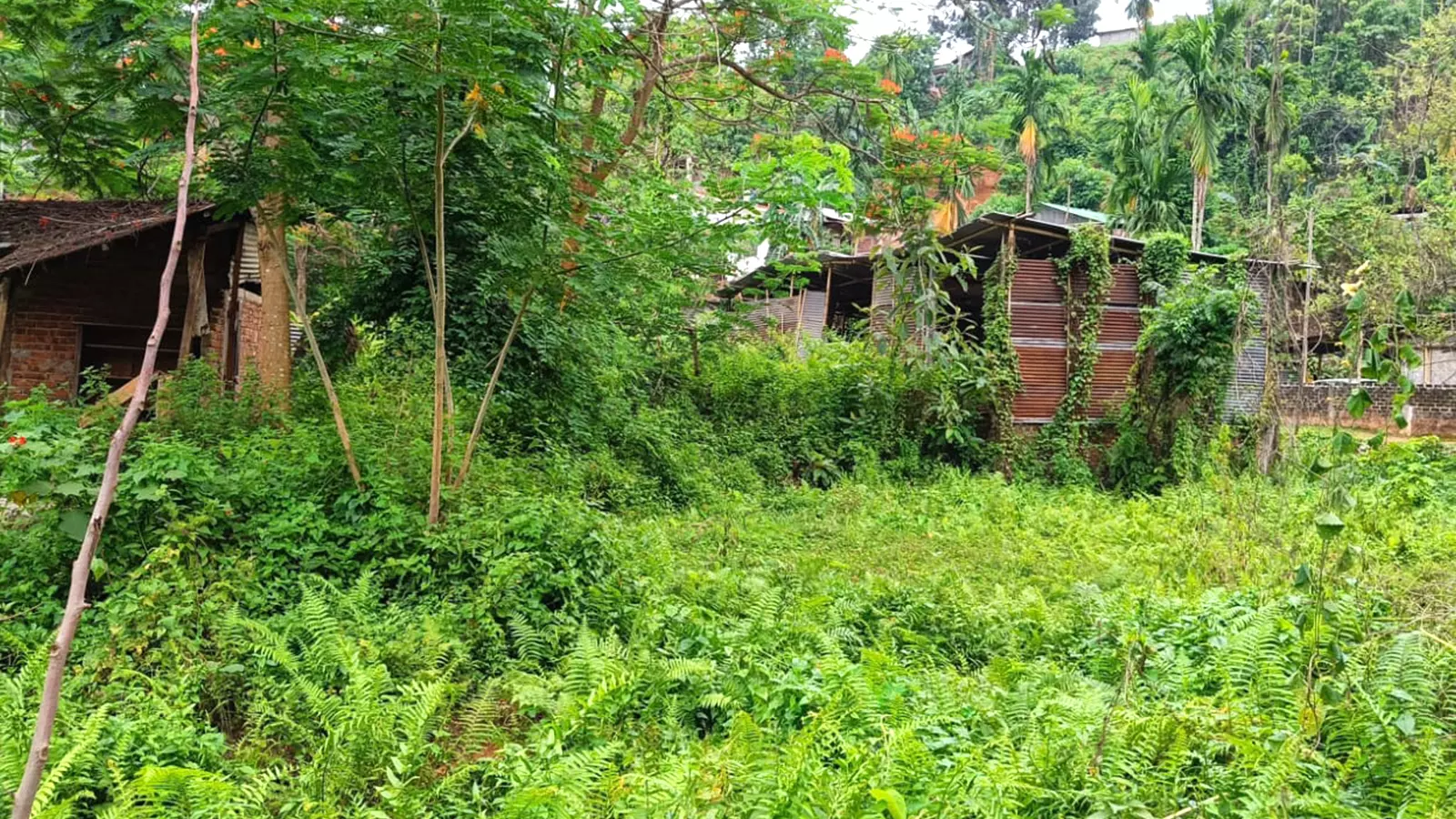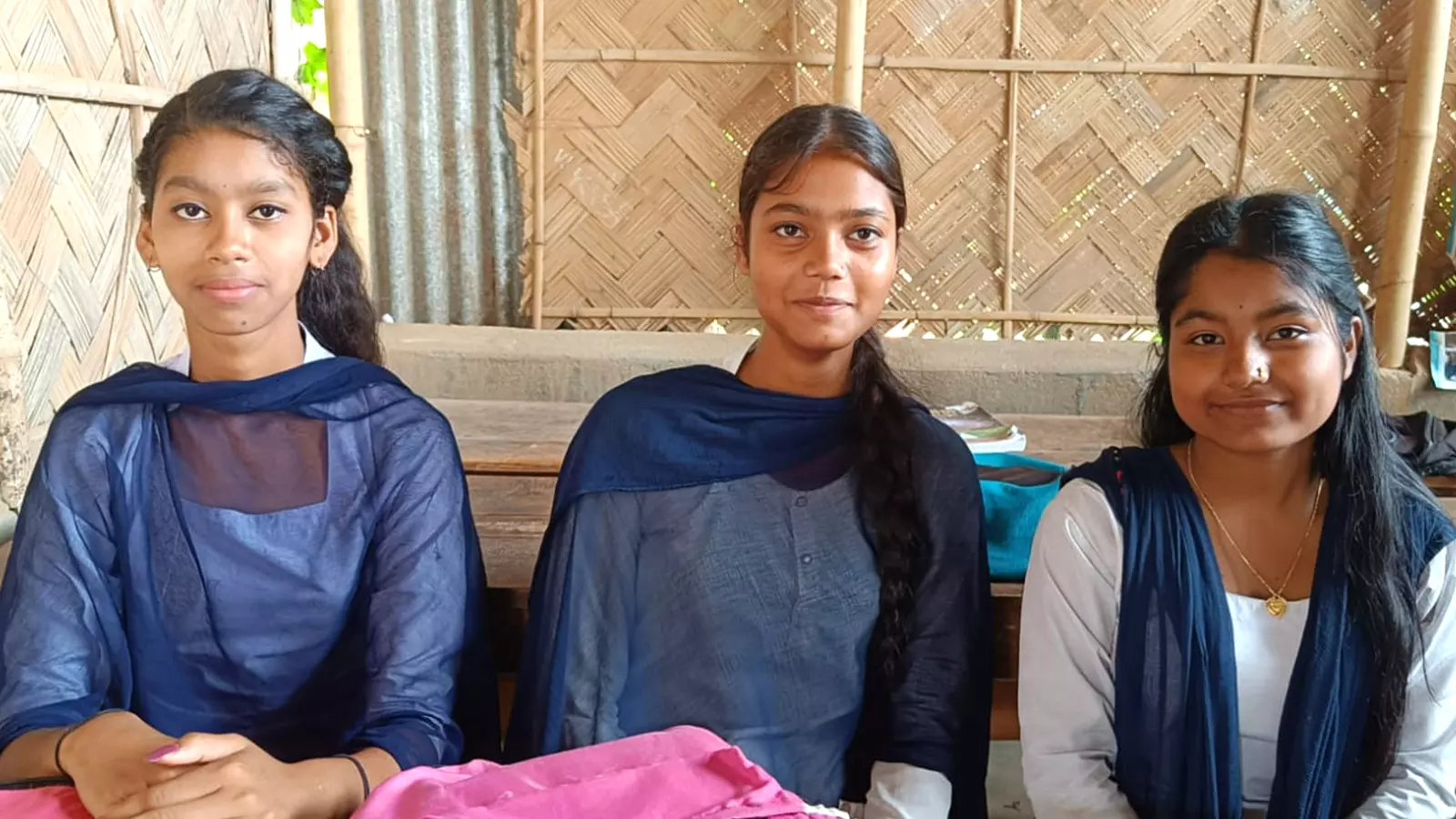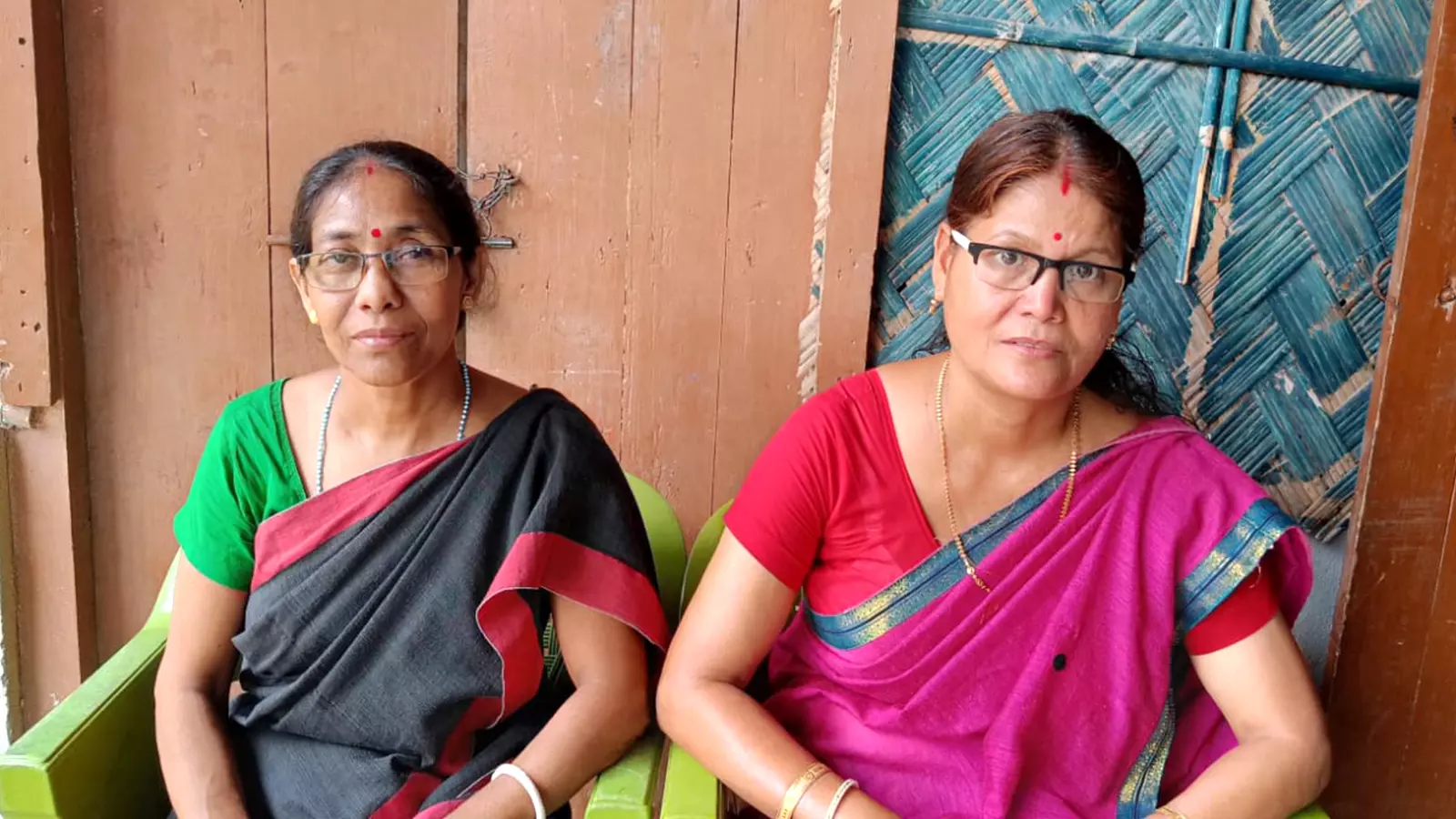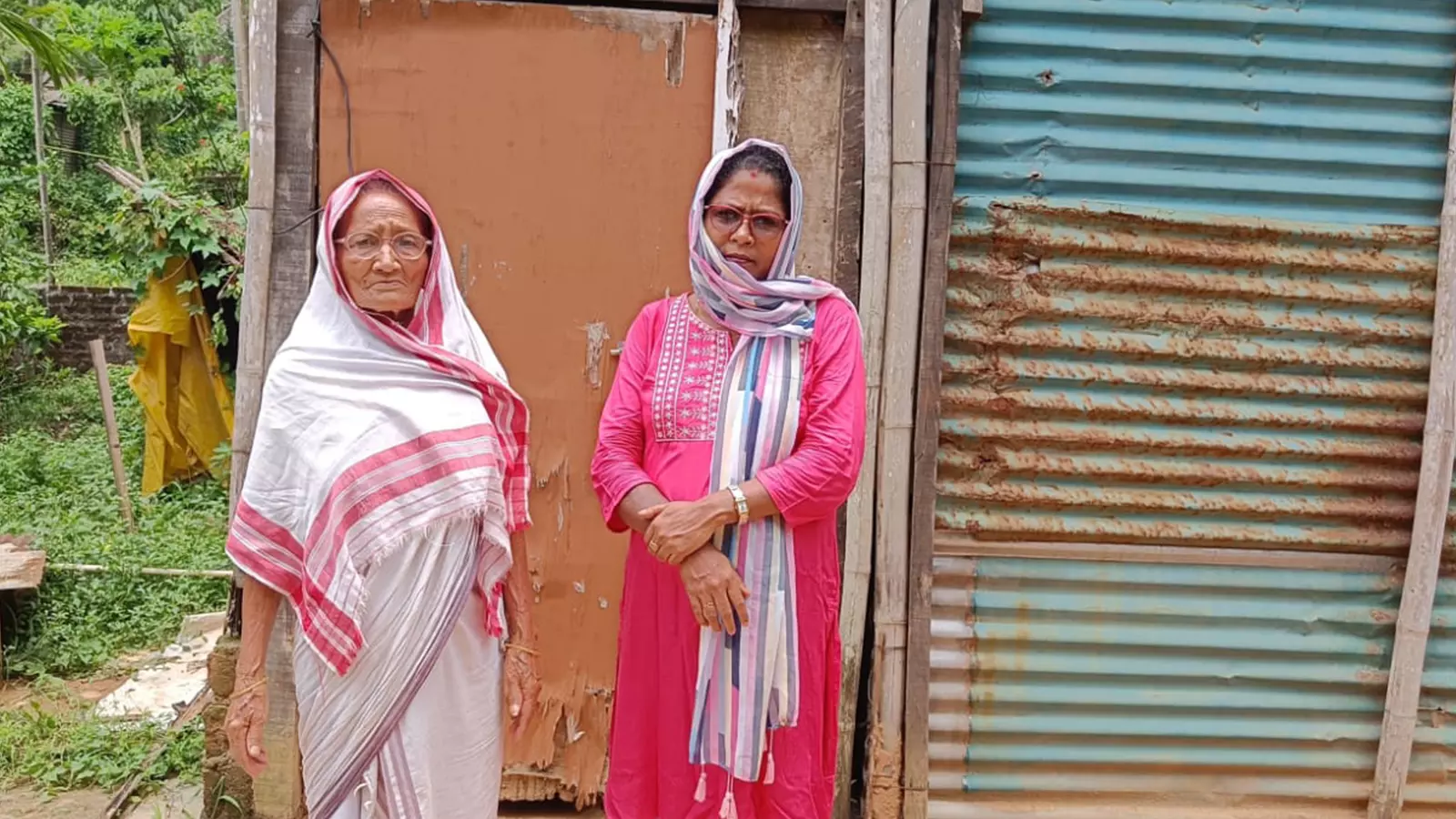
- Home
- India
- World
- Premium
- THE FEDERAL SPECIAL
- Analysis
- States
- Perspective
- Videos
- Sports
- Education
- Entertainment
- Elections
- Features
- Health
- Business
- Series
- In memoriam: Sheikh Mujibur Rahman
- Bishnoi's Men
- NEET TANGLE
- Economy Series
- Earth Day
- Kashmir’s Frozen Turbulence
- India@75
- The legend of Ramjanmabhoomi
- Liberalisation@30
- How to tame a dragon
- Celebrating biodiversity
- Farm Matters
- 50 days of solitude
- Bringing Migrants Home
- Budget 2020
- Jharkhand Votes
- The Federal Investigates
- The Federal Impact
- Vanishing Sand
- Gandhi @ 150
- Andhra Today
- Field report
- Operation Gulmarg
- Pandemic @1 Mn in India
- The Federal Year-End
- The Zero Year
- Science
- Brand studio
- Newsletter
- Elections 2024
- Events
Evicted, not defeated: Assam school turns symbol of defiance against state repression

November 27, 2017, is forever etched in Kanak Kalita’s memory. It was the worst day of his life. Surrounded by children and adults, Kalita, 53, helplessly watched as Janashimalu High School, in Assam's Kamrup district, turned into rubble during an eviction drive by the government on that day.Kalita was a teacher in the school on the outskirts of Guwahati, where Assam's capital Dispur...
November 27, 2017, is forever etched in Kanak Kalita’s memory. It was the worst day of his life. Surrounded by children and adults, Kalita, 53, helplessly watched as Janashimalu High School, in Assam's Kamrup district, turned into rubble during an eviction drive by the government on that day.
Kalita was a teacher in the school on the outskirts of Guwahati, where Assam's capital Dispur is located.

Almost seven years after it was evicted, Janashimalu High School in Assam's Kamrup district looks like a haunted place. Photos: Maitreyee Boruah
The eviction drive continued for two days, as bulldozers, elephants and labourers under the supervision of police personnel and administrative officials, pulled down around 1,000 houses, schools and religious places close to the Amchang Wildlife Sanctuary.
The then-Bharatiya Janata Party (BJP) government under chief minister Sarbananda Sonowal (now also the BJP is in power in the state) carried out the eviction drive —as per a Gauhati High Court order—to remove “encroachers from an eco-sensitive zone”.
Amchang was declared a wildlife sanctuary by the state government in 2004. Locals alleged that the eviction drive was done on pretence. They claim all the demolished structures were outside the wildlife sanctuary boundary (as shown in the revenue survey map of the government itself) and the locals were annually paying matir khajana (land tax) to the government.

Kanak Kalita, the school principal, says he has received a salary only twice.
As large-scale protests erupted against the "brutal and inhumane act", the government appealed to the Gauhati High Court to stop the eviction drive which was granted. It was too late as the damage was already done.
A mission to provide education to poor children
Almost seven years after the controversial eviction drive which "destroyed the future of hundreds of students and rendered an equal number of families homeless", Kalita is on a mission to keep the school running. Now, as the school's principal, he is conducting classes for 200 children from a ramshackle building, around two kilometres from where the school was originally located. The school has five classes from class six to class ten.
Today, the school stands as a symbol of defiance against the BJP government's innumerable eviction drives across the state since it first came to power in Assam in 2016.
Critics of current chief minister Himanta Biswa Sarma’s regime allege that the eviction drives have become a tool for the government to target poor Bengali-speaking Muslims. The Sarma government has also targeted several tribal populations to drive them out of their land and homes in similar ouster mechanisms in and around forest lands.
Be it the 2021 Darrang district’s Dhalpur or 2022-2023 Kamrup district’s Silsaku wetlands eviction drives, one thread is common in all these land clearance steps—heavy forces were used to target people and make them homeless.
An eviction drive that targeted poor children
Despite insurmountable odds, teachers, students and locals are not giving up. It is a daily struggle for the school's existence.
“The government has repeatedly ignored our demand to build us a proper school building. We have no option but to conduct classes from this building which does not have electricity, toilet, drinking water, kitchen or teachers' room,” rued Kalita.
The school was a community-led initiative established by the locals near Amchang Wildlife Sanctuary in 1993 for Bodo, Rabha, Karbi, Assamese and Bengali-speaking Muslim children. Earlier, there was no neighbourhood school. The children from underprivileged backgrounds could not afford to attend private schools or travel several kilometres to study in government-run schools.

Female students don't attend to nature's call during school hours as there is no washroom.
“Over the years, till the 2017 eviction drive, we all worked hard and built a proper Assam-type school building with seven classrooms, a kitchen (for midday meals), a storeroom and a teachers' room. We had more than 400 students. The eviction hampered the education of all our students. Many stopped attending their classes and became dropouts,” added Kalita, who joined the school in 1998.
Putoli Kalita, a Hindi teacher at the school, recalled the horrific consequences of the eviction drive. “We did not give up. Right after the eviction, we started taking classes inside a tent on the school campus. We had no other place to go. We ran the makeshift school till May 2018. We endured the vagaries of nature without any support.
“We lost 200 students as they stopped coming to the school. It was almost impossible to teach children inside a tent," added the Hindi teacher.
Then from May 2018 to February 2020 (till the Coronavirus pandemic hit the world), the classes for the school were conducted at the nearby Bhotaguli Lower Primary School. In October 2020, a local politician helped the school to relocate to an unused primary healthcare centre. "Since then we have been conducting classes here," said Leena Kakoty, who teaches science and mathematics.

Leena Kakoty (left) and Putoli Kalita (right), two teachers, still remember the horrific consequences of the eviction drive.
A ramshackle building for a school
But it is hard as the school is almost on the verge of collapse. The walls made of bamboo sheets are falling apart. The tin roofs have holes all over them. "Be it summer, winter or monsoon, sitting inside the classroom requires a lot of patience. We get drenched in sweat during the summer as there is no fan. During rainy days, water enters classrooms because of ceiling leaks. In winter, the broken walls can't protect us from the cold," said Hiya Talukdar, a class ten student.
"On a rainy day, it becomes difficult to attend classes as the road to the school is unmetalled. It becomes slippery and dangerous to walk. But I have no other option but to study in the school as my parents can't afford to send me to other schools as they charge astronomical fees," added Talukdar, whose parents are daily wage earners.
The school declares a "holiday" if weather conditions become too difficult.
Talukdar's classmate Mofida Khatun said female students don't attend to nature's call during school hours as there was no washroom. "Many girls skip classes when they are menstruating."
The parents of most of the children work as daily wage earners or do odd jobs to survive. "I wish the original school building was never demolished. We too could have studied in an environment fit to be a classroom," said Mominul Hussain, a student.
No salary for teachers
The school is one of the many "venture educational institutions" across Assam trying to remain afloat. In Assam, a school or a college started by the locals in a neighbourhood before January 1, 2006, is called a venture school or a venture college. These schools and colleges have received permission from the state government and recognition from the Board of Secondary Education, Assam, to conduct classes, but are not provincialised by the government.
So over the years, these educational institutions have stopped getting aid from the government including midday meals for school children. Several such venture educational institutions have closed. Teachers of the schools which are still functional don't get any salary.
Principal Kalita and his colleagues have not received their salary for almost 10 years. "Once we have joined the school, we can't leave it. We are teachers and our job is to teach children even when we don't get a salary. In a way, we all are doing social work. I have received a salary only twice. It was around Rs 4,000," said the principal.
To run their households, most teachers have small businesses like grocery shops. One of the teachers works as a reporter in an Assamese newspaper in Guwahati.
Vidyadhar Talukdar, 62, joined the school as a teacher after he retired as a government employee. "It gives me immense pleasure to teach the children. I teach them mathematics and science. I don't get any salary for teaching. Neither do I want any financial reward. This is my way to serve the nation and its children. But my students deserve better," he added.
The students pay a monthly fee of Rs 100 to keep the school running. The amount is used to buy school essentials and other miscellaneous items. The students buy their uniforms but get free books from the education department.
Local initiative destroyed by government highhandedness
"Janashimalu High School was started by the locals as there was no school for poor children in the locality. It's the responsibility of the government to build and run schools. But in Assam, the government is on a spree to close such community-based initiatives. The government does not want poor children to get an education. It is inhumane on the part of the government to let a school like Janashimalu High School conduct classes without basic facilities. The children in the school are treated worse than cattle," said a resident, who did not wish to be named.
Bhaskar Kalita, a Guwahati-based activist, trying to provide "justice" to the teachers and students said the government should immediately do something to upgrade the school infrastructure and facilities. "If the school gets closed, all these poor children will forever lose their education," he added.
The remains of a destruction
Tall grasses and wild plants have replaced the evicted school campus. It looks like a haunted place where no one dares to come. "I can't forget the day. It was cold and drizzling. Around 8 am, bulldozers, labourers and elephants surrounded the whole area. They started demolishing everything that came on their way. My home was demolished. So was the school," said 85-year-old resident Bina Das, whose house stood close to the evicted school.

Bina Das (left) and her daughter-in-law Abonti (right) lost their house during the eviction drive.
"We never got any notice. We all were taken by surprise when the eviction drive started. The authorities did not give us time to collect even our belongings. I lost everything. After the eviction, several families (including mine) survived the cold for weeks under the open sky. We did not eat for days. There was nothing left," the widow added.
Many residents were allowed to rebuild their houses after the government suspended the eviction drive. Das's family, including her son, daughter-in-law and grandson, now stay in a one-room house built of bamboo and tin. "We had a nice house. It was our dream and now it has been shattered," said Das's daughter-in-law Abonti, 49.
